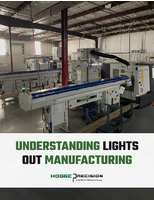Ultra-Fine Glass Fiber Yarns insulate and stabilize PCB substrates.
Share:
Press Release Summary:

Intended for use as reinforcement and dielectric in PCB substrates, ultra-fine yarns are woven into fabric and laminated with epoxy resin and copper foil to produce copper clad laminate. E-Glass composition enhances electrical insulator properties while providing thermo-mechanical stability to PCBs. Respectively used to produce fabric styles 1037 and 1027, C1200 and BC 1500 yarns consist of 100 filaments of 4.5 and 4 micron dia.
Original Press Release:
AGY Introduces Ultra-Fine Yarns for PCB Substrates
AIKEN, SC, USA - AGY, a leading global producer of glass fiber yarns and high-strength glass fiber reinforcements, recently announced the introduction of ultra-fine yarns for use in printed circuit board (PCB) substrates. Designed to meet the growing needs of the electronics market where miniaturization and increased functionality are expanding exponentially, these ultra-fine yarns allow PCB suppliers to create thinner laminates for higher layer counts and greater circuit density.
"As electronic devices become smaller and include more functions, the complexity of PCB design continues to expand," explained Scott Northrup, Director of New Business Development at AGY. "This means adding more conducting layers in the same thickness of board. In order to accomplish this, glass fabric reinforcement must become even thinner and this requires finer and finer glass yarns."
AGY's new ultra-fine yarns are on the cutting edge of glass fiber yarn development. "What makes them ultra-fine is the small number of fine diameter filaments comprising the yarn," said Northrup. "For example, our C1200 yarn, which is used to produce fabric style 1037, consists of 100 filaments of 4.5 micron diameter. Our BC 1500 yarn, used to produce fabric style 1027, consists of 100 filaments of 4 micron diameter. Our BC 3000 yarn, currently under development, will contain only 50 filaments of 4 micron diameter. For comparison, until the introduction of ultra-fine yarns, the finest yarns for PCBs have been 5 micron, typically with 100 or 200 filaments - known as D900 and D450. Other common yarns used in PCBs consist of 200 or 400 filaments of 7 or 9 micron diameter."
Used as a reinforcement and dielectric, the ultra-fine yarn is woven into fabric and then laminated with epoxy resin and copper foil to produce copper clad laminate - the building block of PCBs. "The yarn's E-Glass composition makes it an excellent electrical insulator and provides thermo-mechanical stability to the PCBs," said Northrup. "Reinforcement with glass fiber fabrics results in excellent dimensional stability which means the board will not warp and twist under stress and heat."
Ultra-fine yarn is particularly well suited for rigid-flex PCBs. This new technology has emerged to meet the ever-increasing need to maximize available space within the electronic assembly. "It allows designers to "fit the circuitry to the device" rather than fit the device to the circuitry," explained Northrup. "The fine diameter of our ultra-fine yarns is conducive to very thin circuits that may involve some degree of flexing or bending. Another emerging market for ultra-fine yarn is mobile communications base stations that require very high layer count boards and a high degree of functionality in a given space."
AGY has been a major supplier of fine yarns to the PCB sector for decades and is a recognized leader in the quality and breadth of its product line. Adding ultra-fine yarns to its portfolio is an achievement for AGY's technology team explained Northrup, "The finer the glass filaments, the more difficult they are to produce. AGY's new ultra-fine yarns will enable the continued development of more sophisticated electronic devices such as smartphones to satisfy the demand for smaller and faster products that deliver more features and functionality."
For more information on AGY's ultra-fine yarns, please call +(1) 803-648-8351, or visit AGY website at www.agy.com.




